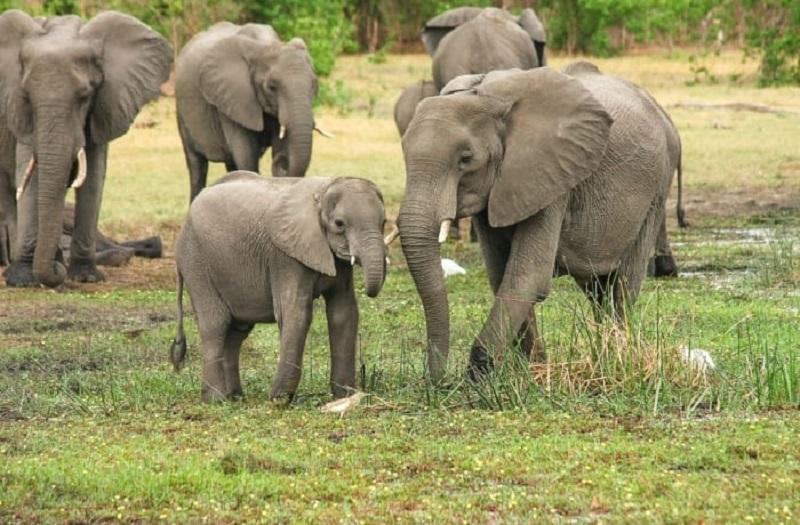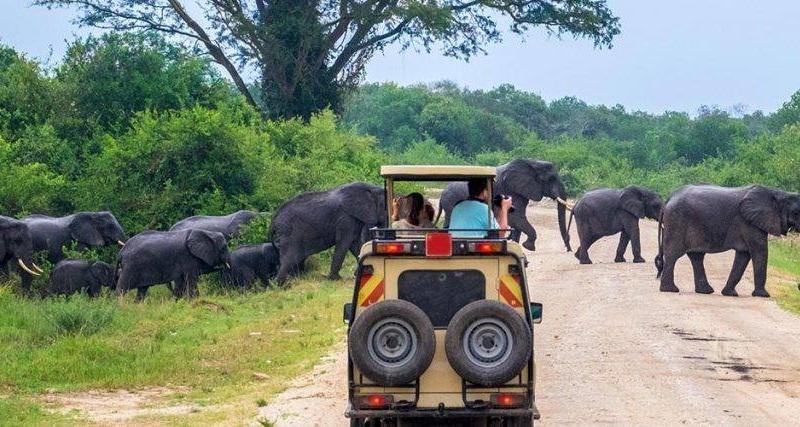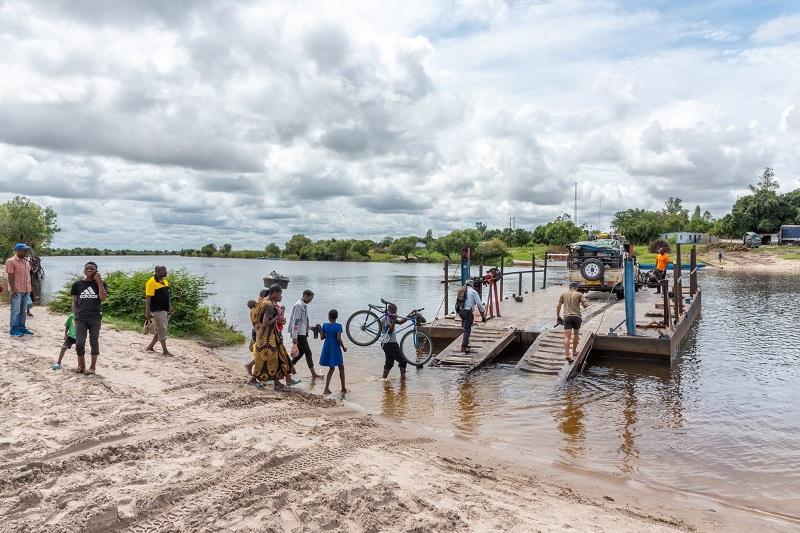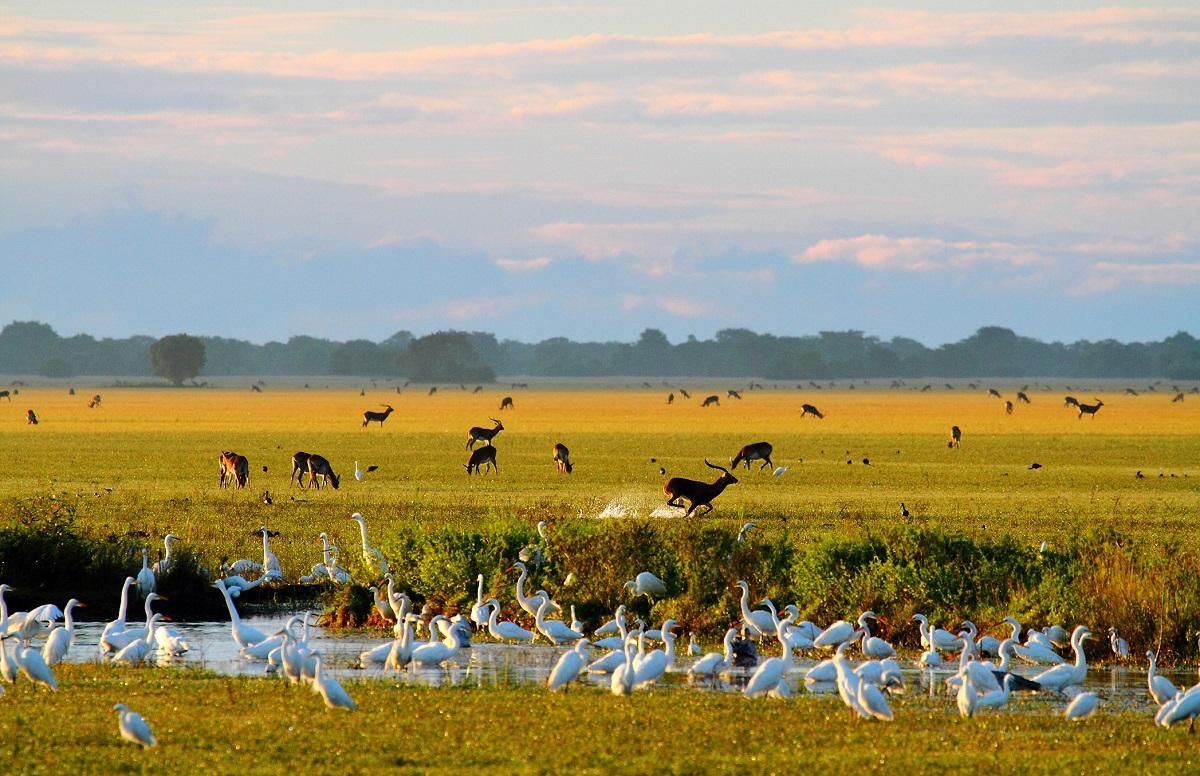Mweru Wantipa National Park is located in the far northern region of Zambia and is one of the country’s lesser-known and more remote wildlife sanctuaries. Covering an area of around 3,134 square kilometers, the park is centered around the saltwater Lake Mweru Wantipa, which gives the park its name. Despite its relative obscurity compared to other Zambian parks, Mweru Wantipa is a unique ecological zone, featuring a blend of wetlands, savannah and woodland.
This park is ideal for adventurers seeking off-the-beaten-path destinations with the potential for wildlife encounters and breathtaking landscapes. While the park has suffered from poaching in the past, ongoing conservation efforts aim to restore its wildlife population and preserve its natural beauty.
Please Download Our Mobile App here.
Overview of Mweru Wantipa National Park
Mweru Wantipa National Park is named after Lake Mweru Wantipa, a shallow, saline lake that plays a critical role in the park’s ecosystem. The park’s landscape is dominated by vast wetlands surrounding the lake, as well as floodplains and miombo woodlands that provide habitats for a variety of species. Mweru Wantipa remains one of Zambia’s most underdeveloped parks, with minimal tourist infrastructure.
Its remote location makes it a perfect destination for adventurous travelers looking for solitude and unspoiled nature. The park is located near the borders of both the Democratic Republic of Congo and Tanzania, making it a culturally rich region. Visitors can experience not only the natural beauty of the park but also learn about the lives of local communities living around the area.
Wildlife in Mweru Wantipa National Park

Though the wildlife population in Mweru Wantipa National Park has been reduced due to poaching, there are ongoing efforts to revive it. The park is home to species such as elephants, lions, buffalo and leopards, although sightings can be rare. Antelope species like the bushbuck and waterbuck can still be found in the park, along with smaller mammals such as warthogs and mongoose.
One of the most notable features of Mweru Wantipa is its birdlife. The wetlands around Lake Mweru Wantipa attract a wide variety of waterbirds, including pelicans, herons, and egrets. Birdwatchers visiting the park can enjoy observing both resident and migratory species that thrive in the unique environment.
In addition to the wildlife, the park’s flora is quite diverse, with stretches of miombo woodland, patches of grassland and dense forest near the lake. The mix of these habitats makes Mweru Wantipa a diverse ecosystem, despite its current challenges.
Best Time to Visit Mweru Wantipa National Park
The best time to visit Mweru Wantipa National Park is during the dry season, which typically runs from May to October. During this period, the park’s trails and roads are more accessible, and wildlife tends to congregate around the remaining water sources, making it easier to spot animals. The dry season is also ideal for birdwatching, as the wetlands around Lake Mweru Wantipa become key gathering spots for various bird species.
The wet season, from November to April, can make access to the park difficult due to heavy rains and flooding. However, the wet season transforms the park into a lush, green paradise and the lake swells with water, attracting more birdlife. While wildlife viewing is more challenging, the landscape is at its most vibrant during this time.
Getting to Mweru Wantipa National Park

Mweru Wantipa National Park is located in Zambia’s northernmost region, making it a remote and relatively inaccessible destination compared to the country’s more famous parks. The nearest town is Kaputa, located around 50 kilometers from the park, and can be reached by road. However, due to the park’s remote location, the journey from Lusaka, the capital of Zambia, takes roughly 16 to 18 hours by road, covering a distance of around 1,200 kilometers.
For those traveling from other parts of Zambia, it is possible to fly to Kasama, the nearest major town, and then continue the journey by road to the park. The drive from Kasama to Mweru Wantipa takes around 6 to 8 hours, depending on road conditions.
Other Activities in Mweru Wantipa National Park
In addition to wildlife viewing, Mweru Wantipa National Park offers visitors the chance to explore the unique wetlands and landscapes surrounding Lake Mweru Wantipa. Fishing in the lake is a popular activity for local communities, and visitors can experience traditional fishing methods while exploring the park’s waterways. Hiking and nature walks are also available, providing a closer look at the park’s flora and birdlife.
For those interested in cultural experiences, a visit to nearby villages offers insight into the lives of the local people who depend on the lake and surrounding area for their livelihoods. Visitors can learn about traditional fishing techniques, agriculture, and the cultural significance of the park to the local communities.
Park Fees for Mweru Wantipa National Park

As of 2024, the park fees for Mweru Wantipa National Park are:
- Foreign Visitors (Adults): $15 per person per day
- Foreign Visitors (Children): $7 per person per day
- Zambian Residents (Adults): $5 per person per day
- Zambian Residents (Children): $2 per person per day
These fees contribute to the conservation and management of the park.
FAQs: Touring Mweru Wantipa National Park
Is it safe to visit Mweru Wantipa National Park?
Yes, it is generally safe to visit, but due to its remote location, it is advised to travel with a guide or local operator who is familiar with the park’s terrain and conditions.
Are there guided tours available in the park?
Guided tours can be arranged through local operators, although infrastructure is limited. It’s recommended to plan in advance if you want a guided safari experience.
What types of accommodation are available near the park?
There are no lodges or hotels inside the park itself, but basic accommodation can be found in the nearby town of Kaputa. Visitors should come prepared with camping equipment if planning to stay inside the park.
Conclusion
Mweru Wantipa National Park offers an extraordinary opportunity to explore one of Zambia’s lesser-known natural treasures. Though remote and wild, it provides an authentic wilderness experience for those seeking solitude and a deep connection with nature.



